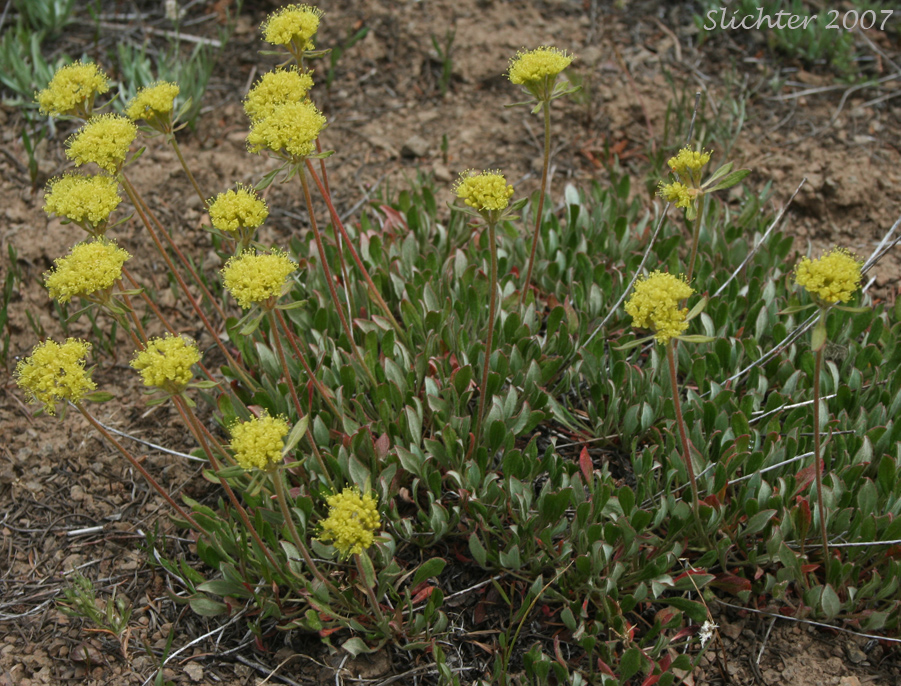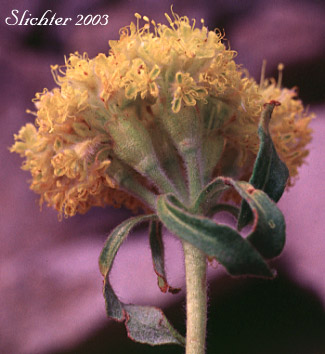
 The
photo at right shows a close-up of the inflorescence of Piper's buckwheat. Note
the heavy pubescence of the involucres. Photographed on Strawberry Mt., Strawberry
Wilderness.....September 5, 1999.
The
photo at right shows a close-up of the inflorescence of Piper's buckwheat. Note
the heavy pubescence of the involucres. Photographed on Strawberry Mt., Strawberry
Wilderness.....September 5, 1999.
Piper's buckwheat may also be known as yellow buckwheat. It is an attractive perennial wildflower, fairly similar in appearance to sulphur flower (Eriogonum umbellatum). It forms dense mats up to 30 cm wide with leafless stems from 5-20 cm high. The leaves are narrowly spatulate-oblanceolate in shape with long, slender petioles. Leaves are 2.5-7 cm long, covered with soft hairs and greenish above while densely whitish-tomentose below.
The inflorescence is a short-rayed umbel with a whorl of lanceolate, leaf-like bracts at its base. Each ray of the umbel has one involucre at its tip. The involucres are conical and 5-6 mm high, copiously villous on the outside. The lobes of the involucre are broadly triangular in shape. The perianth is 4-6 mm long, covered with hairs, and typically pale to deep yellow, or occasionally rose-tinged or red.
Subspecies flavum: Plants typically found east of the Rocky Mts. Plants typically grayish-tomentose with thick, wide leaves. The leaves are typically grayish on both surfaces or gray above and whitish below.
Subspecies piperi var. linguifolium: Plants found west of the Rocky Mts. Leaves greenish on the upper surface. Involucres less than or equal to 5 mm long and with more rounded (bell-shaped) bases. The teeth of the involucres are usually greater than 0,5 mm long.
Subspecies piperi var. piperi: Plants found west of the Rocky Mts. Leaves greenish on the upper surface. Involucres at least 6 mm long and narrowly conical in shape. The teeth of the involucres are usually less than 0.5 mm long.
The flower heads of Piper's buckwheat are browsed by deer, elk, horses, bighorn sheep and mountain goats. The foliage is eaten by blue grouse.
Piper's buckwheat may be found on open, rocky slopes, ridges or grasslands from moderate to fairly high elevation in the mountains.
As a species, Eriogonum flavum may be found from British Columbia south to the east of the Cascades to the Blue Mts. of Oregon and California and east to south-central Idaho and Colorado and southwestern Alberta. Variety piperi may be found from southern British Columbia and south across eastern Washington to both the Blue and Wallowa Mts. of northeastern Oregon and east across northern Idaho and Montana to southwestern Montana.